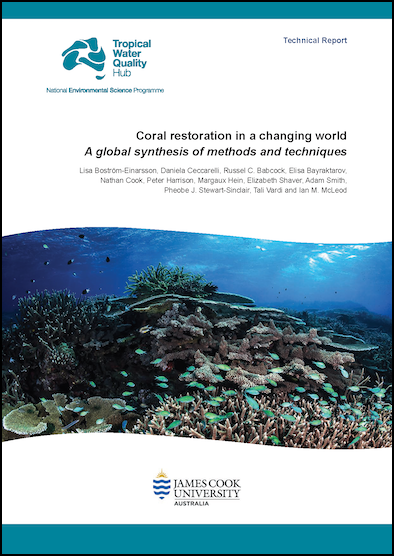
There is pressing need for effective restoration in many ecosystems, from rainforest to reef. However, restoration effort is generally uncoordinated, and there is little information about the short- or long-term effectiveness of such projects, or any ability to learn from successes and failures such that return-on-investment improves over time.
In response, we undertook a values-based rather than threats-based approach to our restoration research work through the NESP TWQ Hub. We conducted evaluations of past and current restoration efforts in all parts of the catchment as well as on coral reefs, delivering answers about what works best, when, and where. We applied innovative solutions to problems, such as adapting minesite rehabilitation techniques to tackle gully erosion. These solutions have already been adopted by landholders, Indigenous groups and NGOs and in some cases have achieved enormous reductions in the amount of soil being lost into reef catchments.
In recognition that restoration is about people, not just ecosystems, we’ve also commissioned socio-economic research to generate more explicit economic benefits for regional communities associated with ecosystem restoration activities, beyond restoration of ecosystem services. For example, canefarmers now better understand how they can receive better value from restoring wetlands on poor-yield areas of their properties.
In several areas our work has contributed to shifting some restoration problems from the “too-hard” basket into “do-able” categories. Along the way one of our teams led by Prof Andrew Brooks at Griffith University also collected a Eureka Prize!
Related Projects
Best practice coral restoration for the Great Barrier Reef - Project 4.3
The traits of corals that survived recent bleaching events - Project 4.4
Gully characterisation framework to underpin GBR catchment water quality management - Project 4.9
Evaluating the costs and benefits of agricultural land conversion to wetlands - Project 4.10
Assessing the Gulf of Carpentaria mangrove dieback - Project 4.13
There is pressing need for effective restoration in many ecosystems, from rainforest to reef. However, restoration effort is generally uncoordinated, and there is little information about the short- or long-term effectiveness of such projects, or any ability to learn from successes and failures such that return-on-investment improves over time.
In response, we undertook a values-based rather than threats-based approach to our restoration research work through the NESP TWQ Hub. We conducted evaluations of past and current restoration efforts in all parts of the catchment as well as on coral reefs, delivering answers about what works best, when, and where. We applied innovative solutions to problems, such as adapting minesite rehabilitation techniques to tackle gully erosion. These solutions have already been adopted by landholders, Indigenous groups and NGOs and in some cases have achieved enormous reductions in the amount of soil being lost into reef catchments.
In recognition that restoration is about people, not just ecosystems, we’ve also commissioned socio-economic research to generate more explicit economic benefits for regional communities associated with ecosystem restoration activities, beyond restoration of ecosystem services. For example, canefarmers now better understand how they can receive better value from restoring wetlands on poor-yield areas of their properties.
In several areas our work has contributed to shifting some restoration problems from the “too-hard” basket into “do-able” categories. Along the way one of our teams led by Prof Andrew Brooks at Griffith University also collected a Eureka Prize!
Related Projects
Best practice coral restoration for the Great Barrier Reef - Project 4.3
The traits of corals that survived recent bleaching events - Project 4.4
Gully characterisation framework to underpin GBR catchment water quality management - Project 4.9
Evaluating the costs and benefits of agricultural land conversion to wetlands - Project 4.10
Assessing the Gulf of Carpentaria mangrove dieback - Project 4.13






